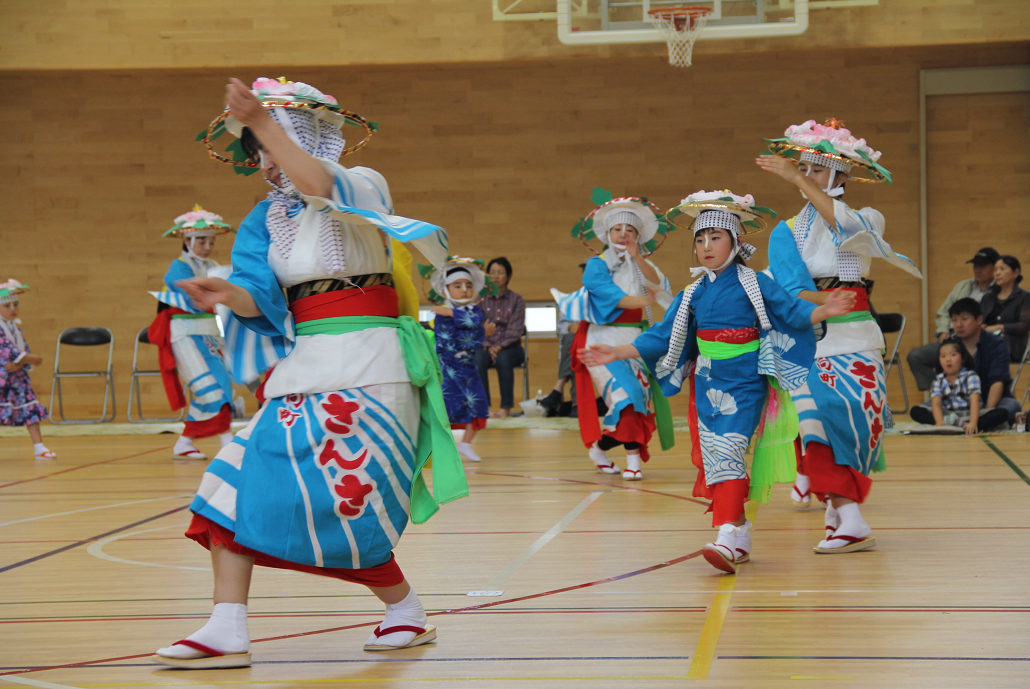向町さんさ踊り
むかいまちさんさおどり
Mukaimachi Sansa-odori
所在地 : 岩手県岩泉町
種別 : 踊り(三陸国際芸術祭過去出演団体)
三陸国際芸術祭出演 : 2021
大正9(1920)年、岩泉町出身の三田地権次郎氏(みたちごんじろう)が、宮古の花輪(はなわ)地区で盛岡の木材業者から踊り・笛・太鼓を習い、持ち帰りました。翌10年、出稼ぎに来ていた小笠原弥一氏と三田地権次郎氏が、町内の若者に教えたのが「向町さんさ」の始まりとされ、佐々木政造氏が最初の弟子とされています。戦前戦中何年か踊られない時期がありましたが、戦後、再度三田地権次郎氏によって若者に教えられました。この時習った若者の多くが向町の青年だったので、「向町さんさ」と呼ばれるようになりました。演目については、「通り」以外ははっきりした名称がなく、太鼓の口拍子で表現していましたが、昭和55(1980)年、岩泉高校文化祭に取り入れられた時から、「通り、本踊り(1番から7番)、甚句くずし」と名付けて、現在9種が踊り継がれています。
Mukaimachi Sansa Odori (Iwaizumi Town)
In 1920, Gonjiro Mitaji from Iwaizumi learned how to dance and play the flute and taiko drum from a Morioka lumber dealer in the Hanawa District of Miyako, and brought them back home. In the following year, Gonjiro and Yaichi Ogasawara, who had come back from work away from home, taught the dance to young people in town, and this is said to be the beginning of the Mukaimachi Sansa Odori. Seizo Sasaki is said to be their first disciple. The dance was not performed for several years before and during the war, but after the war, Gonjiro started teaching the young people again. Because many of these young adults were from Mukaimachi, the dance came to be called “Mukaimachi Sansa”. There were no clear names for the different dances except for “To-ri,” and were expressed by the verbal rhythms. However in 1980, the dances were named, “To-ri, Hon-odori (No. 1 to No. 7), and Jinku-kuzushi”, when the dance was introduced at the Iwaizumi High School Cultural Festival, with a total of 9 dances that are being passed on today.
